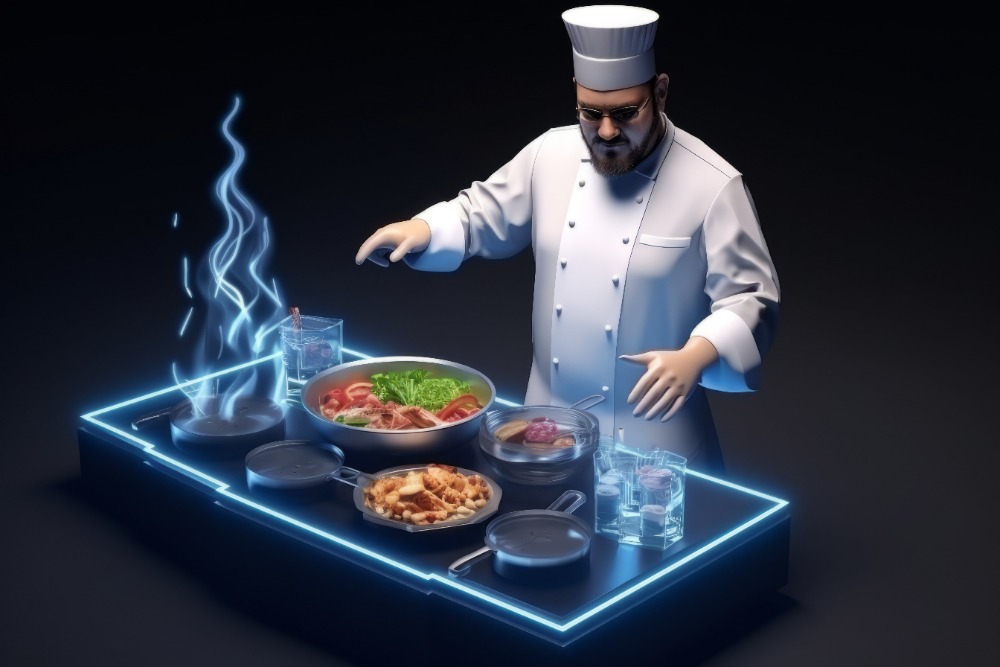The Rise of Cloud Kitchens is reshaping the food industry in India. These delivery-only kitchens have disrupted traditional restaurant models, offering efficiency, cost savings, and scalability. With the increasing demand for food delivery and advancements in technology, cloud kitchens have emerged as a preferred business model for restaurateurs and entrepreneurs alike. Let’s explore how this trend is changing the landscape of the food industry in India.
What are Cloud Kitchens?
Cloud kitchens, also known as ghost kitchens or dark kitchens, are commercial facilities specifically designed for food preparation and delivery. Unlike traditional restaurants, they don’t have a dine-in option. Orders are received online through apps or websites, and food is delivered directly to customers.
Key Features of Cloud Kitchens
- Operate exclusively through online platforms.
- Minimized overhead costs by eliminating dine-in services.
- Optimized for delivery with efficient kitchen layouts.
- Use technology to streamline operations and manage orders.
The Growth of Cloud Kitchens in India
The Rise of Cloud Kitchens in India can be attributed to several factors, including:
- Changing Consumer Preferences
- Technological Advancements
- AI-powered apps provide personalized meal recommendations.
- Real-time order tracking enhances customer satisfaction.
For a global perspective on cloud kitchen operations, check out What Are Cloud Kitchens and How Do They Work?
- Cost-Effectiveness
- Cloud kitchens require lower capital investment compared to traditional restaurants.
- Rent and labor costs are significantly reduced.
- Pandemic-Driven Shift
- The COVID-19 pandemic accelerated the Rise of Cloud Kitchens, as restrictions on dining out increased reliance on delivery services.
Advantages of Cloud Kitchens
The Rise of Cloud Kitchens offers numerous benefits for both businesses and consumers:
For Businesses:
- Lower Operating Costs: No need for prime real estate or extensive staff.
- Scalability: Easily expand to multiple locations without significant investment.
- Data-Driven Insights: Analyze customer behavior to optimize menus and pricing.To understand the financial aspects better, explore The Economics of Cloud Kitchens.
For Consumers:
- Wide Variety: Access to diverse cuisines from the comfort of home.
- Affordability: Lower operating costs translate to competitive pricing.
- Convenience: Quick delivery and easy online ordering.
Challenges Facing Cloud Kitchens
While the Rise of Cloud Kitchens is promising, there are challenges to address:
- Intense Competition
- The low entry barrier has led to a saturated market.
- Differentiation through quality and branding is crucial.
- Dependence on Delivery Platforms
- Reliance on third-party aggregators can impact profit margins.
- Developing in-house delivery systems is a potential solution.
- Maintaining Quality and Hygiene
- Ensuring consistent food quality and hygiene standards is vital for customer trust.
The Role of Technology

Technology is at the heart of the Rise of Cloud Kitchens. Key innovations include:
- Order Management Systems: Automate order processing and kitchen workflows.
- AI and Machine Learning: Analyze customer data to predict demand and optimize operations.
- Delivery Optimization: Use GPS tracking and route planning for efficient deliveries.
- Virtual Brands: Create multiple brands under one kitchen to target different customer segments.Sustainability is also a key factor in modern operations. Learn more from Sustainability in the Cloud Kitchen Model.
Case Studies of Successful Cloud Kitchens in India
1. Rebel Foods (Faasos)
- One of the pioneers in the Rise of Cloud Kitchens in India.
- Operates multiple virtual brands from a single kitchen.
- Uses AI to analyze consumer preferences and optimize operations.
2. Box8
- Combines Indian flavors with quick delivery services.
- Focuses on technology-driven solutions to ensure efficiency.
The Future of Cloud Kitchens in India
The Rise of Cloud Kitchens is expected to continue growing, driven by:
- Increased Internet Penetration: Rising smartphone usage and affordable data plans.
- Expansion to Tier-2 and Tier-3 Cities: Catering to untapped markets with growing demand.
- Sustainability Initiatives: Adopting eco-friendly packaging and energy-efficient practices.
- Integration with Smart Homes: Seamless ordering through voice assistants and IoT devices.
Related Articles
To learn more about trends shaping the food delivery industry, explore:
- Food Delivery Trends in 2024: Insights into the latest innovations and consumer preferences.
- The Impact of AI on Food Delivery: Discover how technology is revolutionizing the way we order and receive meals.
Conclusion
The Rise of Cloud Kitchens is transforming the food industry in India, offering unparalleled opportunities for innovation and growth. By leveraging technology and adapting to changing consumer needs, cloud kitchens are poised to dominate the future of food delivery. However, overcoming challenges and maintaining quality will be key to sustaining this growth.

